The Sandy Bridge Review: Intel Core i7-2600K, i5-2500K and Core i3-2100 Tested
by Anand Lal Shimpi on January 3, 2011 12:01 AM EST3D Rendering Performance
Today's desktop processors are more than fast enough to do professional level 3D rendering at home. To look at performance under 3dsmax we ran the SPECapc 3dsmax 8 benchmark (only the CPU rendering tests) under 3dsmax 9 SP1. The results reported are the rendering composite scores.
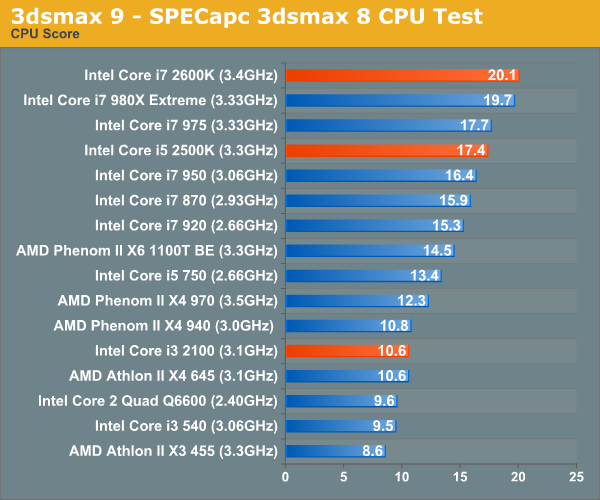
At the risk of sounding like a broken record, we have a new champ once more. The 2600K is slightly ahead of the 980X here, while the 2500K matches the performance of the i7 975 without Hyper Threading enabled. You really can't beat the performance Intel is offering here.
The i3 2100 is 11% faster than last year's i3 540, and the same performance as the Athlon II X4 645.
Created by the Cinema 4D folks we have Cinebench, a popular 3D rendering benchmark that gives us both single and multi-threaded 3D rendering results.
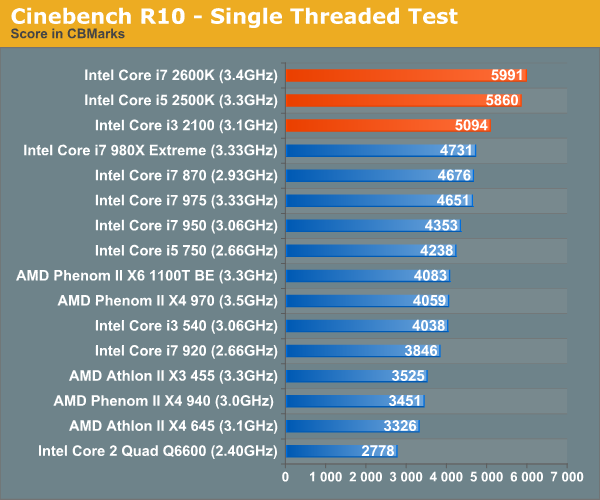
Single threaded performance sees a huge improvement with Sandy Bridge. Even the Core i3 2100 is faster than the 980X in this test. Regardless of workload, light or heavy, Sandy Bridge is the chip to get.
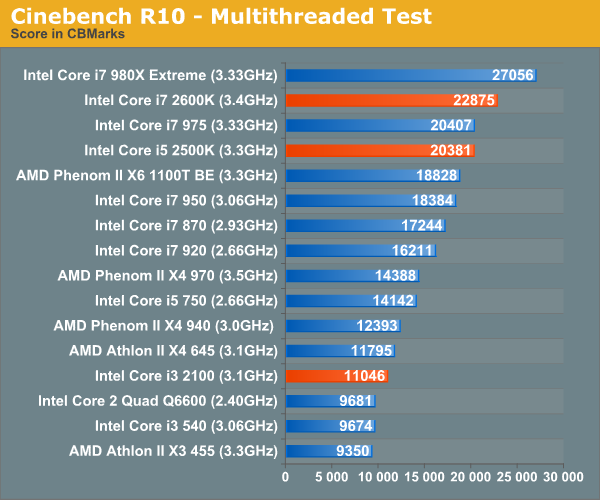
POV-Ray is a popular, open-source raytracing application that also doubles as a great tool to measure CPU floating point performance.
I ran the SMP benchmark in beta 23 of POV-Ray 3.73. The numbers reported are the final score in pixels per second.
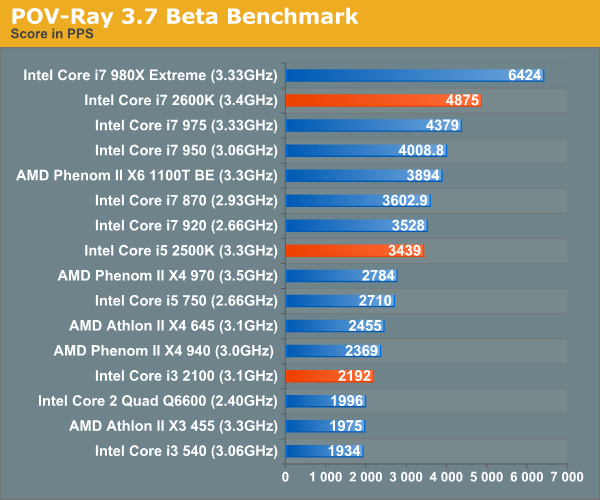
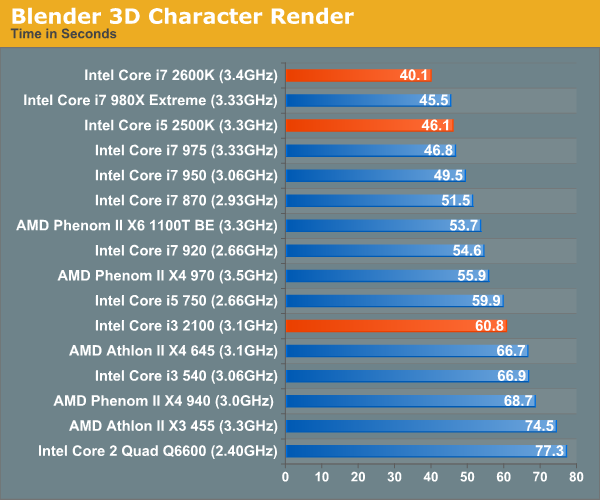










283 Comments
View All Comments
iwodo - Monday, January 3, 2011 - link
1. Transcoding @ 100fps is not uber fast. x264 ultrafast setting is even faster then that. So i hope there are further improvement or potentials in the Quick Sync that we haven't yet discovered.2. OpenCL - No mention of OpenCL? At all?
3. I would think Intel GD has done very well this time around. And there are possibly 20 - 30% more performance to squeeze out given how Intel Gfx Drivers tend to be VERY POOR.
cactusdog - Monday, January 3, 2011 - link
Thanks for the excellent run down of Sandy Bridge. As i have a x58 system i'm going to skip it and see what happens in Q4 . X58 has been a good platform and lasted longer than most others in recent years.xxxxxl - Monday, January 3, 2011 - link
I've thought it over...and i don't believe that H67 only support GPU overclocking.Like what others said, buy a "K" cpu to get HD3000 graphic and cannot overclock...and on the other side, those with P67 buy unlocked "K" CPU get HD3000 but cannot use...then what's the point of making HD3000 graphics?
strikeback03 - Tuesday, January 4, 2011 - link
As they pointed out, with the Z series motherboard you can have both. That said, it does seem stupid that Intel would launch with those official guidelines, and in these comments others are saying some H67 motherboards are allowing the CPU multiplier to be changed.rs2 - Monday, January 3, 2011 - link
As tempting is this chip looks, my 3.8 GHz Core 2 Quad is still more CPU than I can really use most of the time. I wonder if we're reaching the point where improved compute performance is not really necessary for mainstream and even most enthusiast users.In any case, the upcoming 6-core/12-thread variant sounds interesting. Maybe I'll upgrade to that if Intel doesn't assign it to the $999 price point.
romanovskis - Monday, January 3, 2011 - link
same here. For gaming or multimedia use, core2quad (mine at 4GHz) is still enough, and probably will be enough for 1-2 years. Best value/money is still in GPU upgrades.iwodo - Monday, January 3, 2011 - link
Beat Value / Money is SSD...cgeorgescu - Monday, January 3, 2011 - link
Best Value/Money is Beer, everybody knows that. Not 6-core but 6-pack.karlostomy - Thursday, January 6, 2011 - link
WIN ^^^agr8man - Monday, January 3, 2011 - link
a great review from you guys, and imo, the i5 2500k is really a steal.